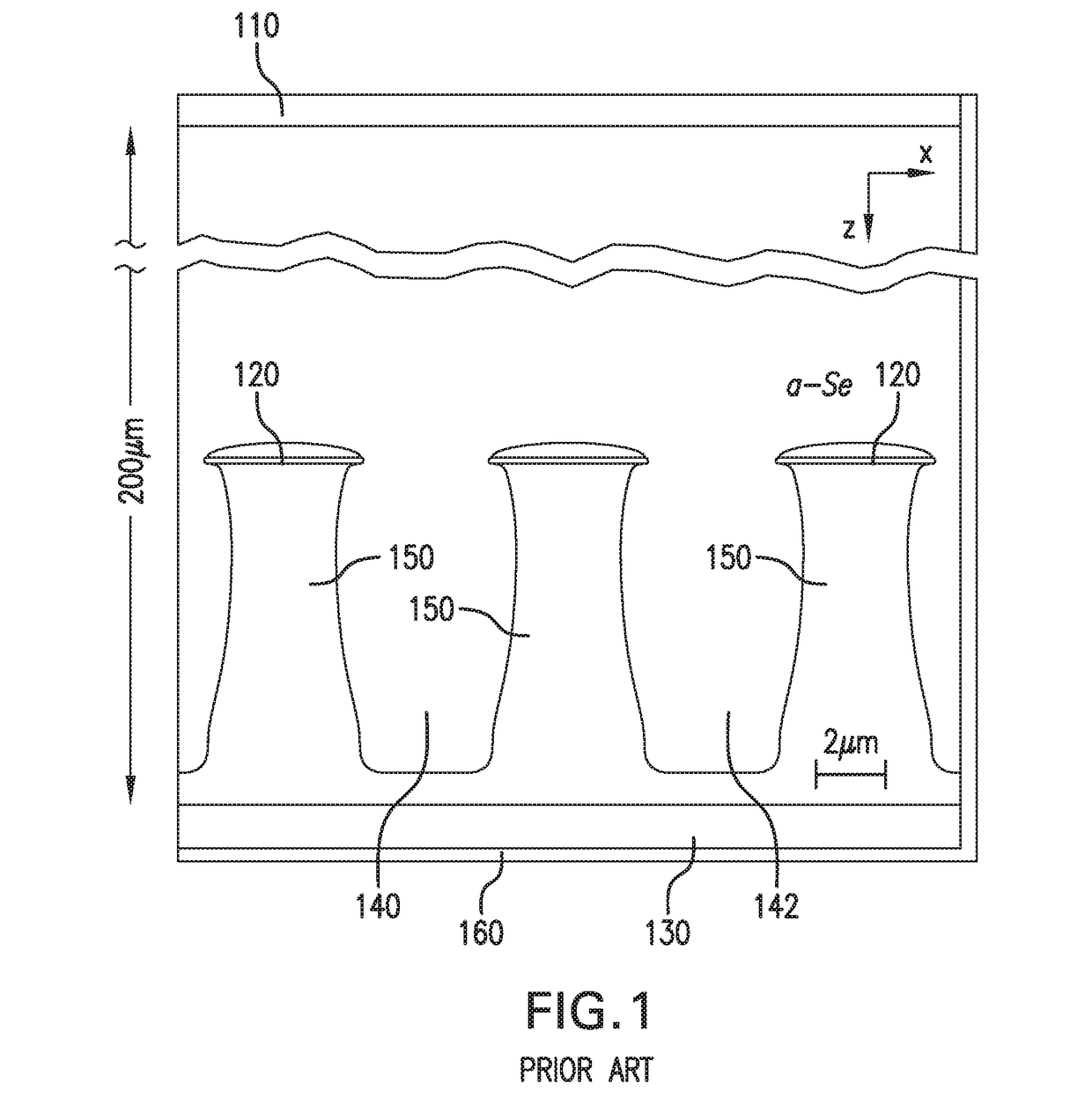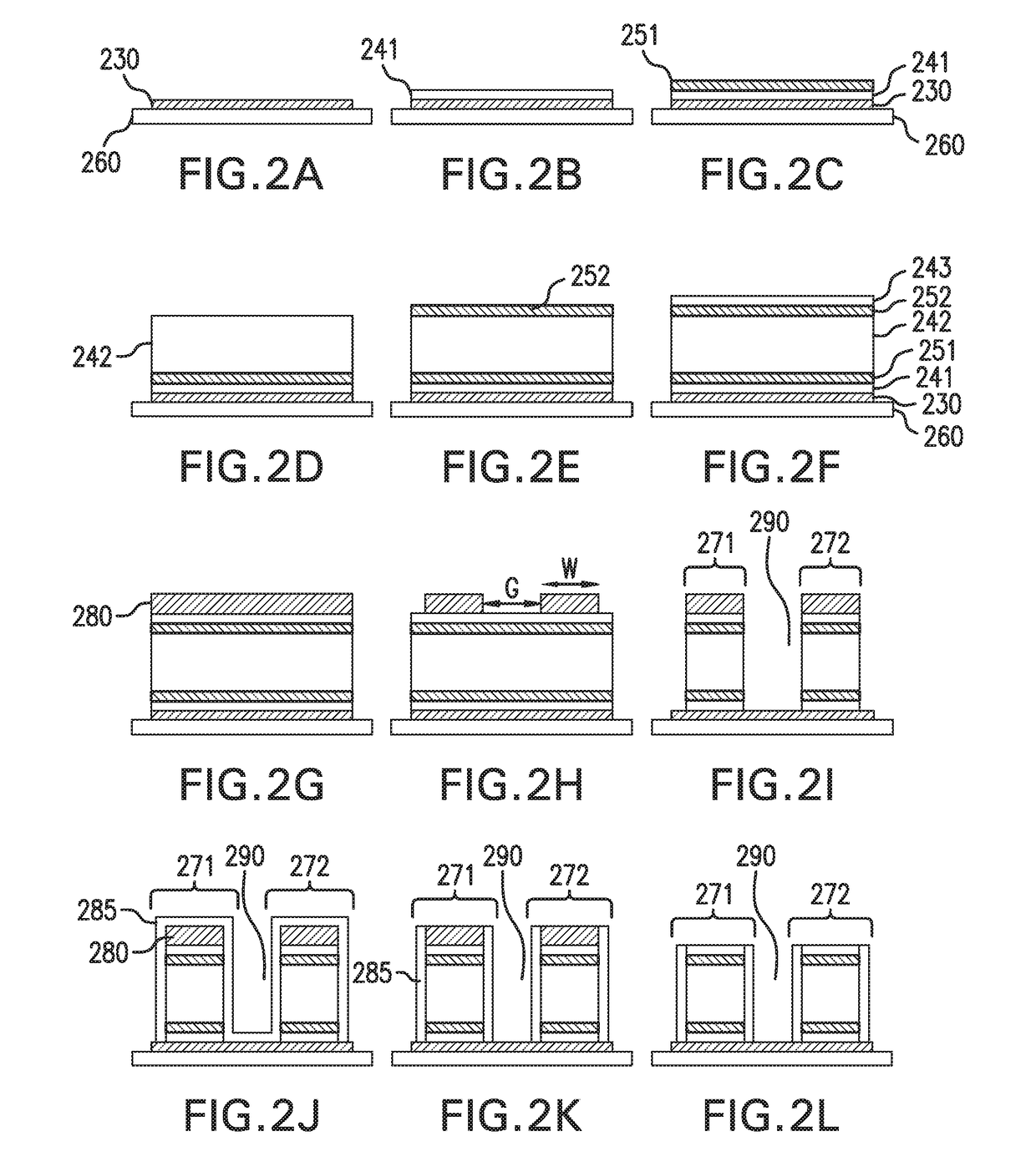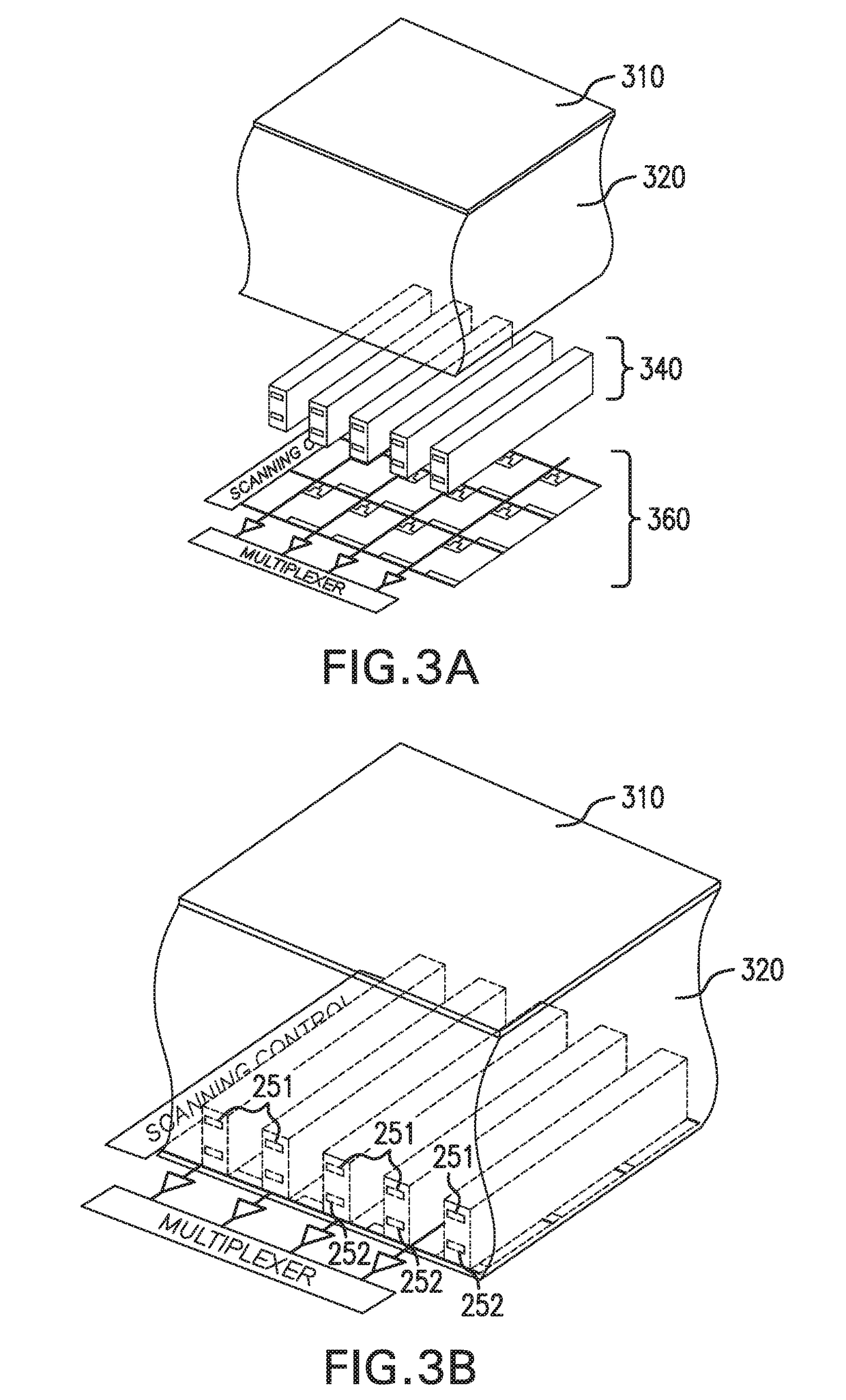Multi-well selenium device and method for fabrication thereof
a selenium device and multi-well technology, applied in the direction of radiation control devices, diodes, semiconductor devices, etc., can solve the problems of avalanche-mode selenium not being the bulk medium, unable to be used as photon-counting mode detection, and variable dependent gain
- Summary
- Abstract
- Description
- Claims
- Application Information
AI Technical Summary
Benefits of technology
Problems solved by technology
Method used
Image
Examples
Embodiment Construction
[0031]The following detailed description of certain embodiments of the present invention will be made with reference to the accompanying drawings. In describing the invention, explanation about related functions or constructions known in the art are omitted for the sake of clearness in understanding the concept of the invention, to avoid obscuring the invention with unnecessary detail.
[0032]Disclosed herein is a solid-state avalanche radiation detector, and a method for constructing same, using amorphous material as the photoconductive layer without field hot-spots, to provide a direct conversion avalanche a-Se. The solid-state avalanche radiation detector is based on field-shaping by localizing the high-field avalanche region between two low-field regions, improving on the devices of Sauli, Lee, and Goldan. [9, 11, 14-16]
[0033]The present disclosure optimizes the solid-state detector structure to provide stable avalanche multiplication gain in direct conversion amorphous selenium r...
PUM
 Login to View More
Login to View More Abstract
Description
Claims
Application Information
 Login to View More
Login to View More - R&D
- Intellectual Property
- Life Sciences
- Materials
- Tech Scout
- Unparalleled Data Quality
- Higher Quality Content
- 60% Fewer Hallucinations
Browse by: Latest US Patents, China's latest patents, Technical Efficacy Thesaurus, Application Domain, Technology Topic, Popular Technical Reports.
© 2025 PatSnap. All rights reserved.Legal|Privacy policy|Modern Slavery Act Transparency Statement|Sitemap|About US| Contact US: help@patsnap.com



